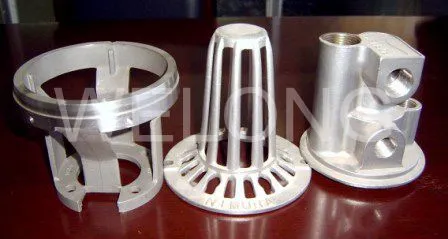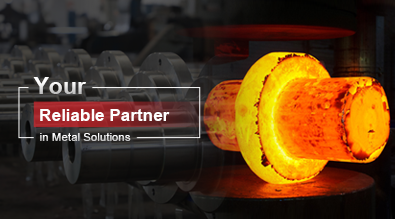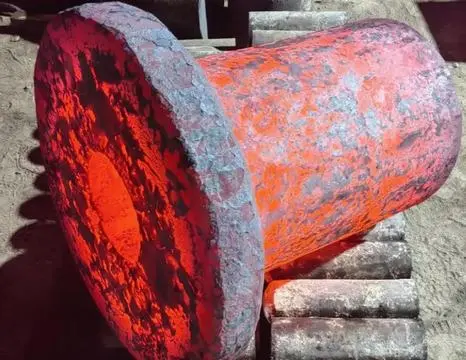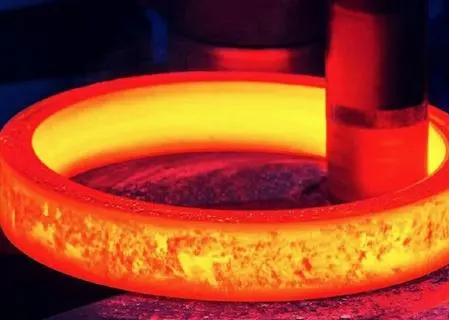Introduction to Silica Sol Casting Process
The silica sol casting process is an advanced investment casting technique that has gained significant popularity in various industries, including aerospace, automotive, and medical devices. This innovative method offers superior surface finish, dimensional accuracy, and the ability to produce complex geometries that are challenging to achieve through traditional casting processes. In this blog post, we will explore the fundamentals of silica sol casting, its advantages, and its applications in modern manufacturing.

What are the key advantages of silica sol casting over traditional investment casting?
Enhanced Surface Finish and Dimensional Accuracy
Silica sol casting offers remarkable improvements in surface finish and dimensional accuracy compared to traditional investment casting methods. The process utilizes a colloidal silica binder, which creates a smoother and more uniform mold surface. This results in cast parts with significantly reduced surface roughness and improved dimensional tolerances. The fine-grained structure of the silica sol slurry allows for the reproduction of intricate details and sharp edges, making it ideal for producing components with complex geometries. Additionally, the improved mold strength and thermal stability of silica sol shells contribute to better dimensional control during the casting process, reducing the need for extensive post-casting machining operations.
Improved Mold Strength and Thermal Resistance
One of the key advantages of silica sol casting is the enhanced mold strength and thermal resistance of the ceramic shells. The colloidal silica binder used in this process creates a more robust and cohesive shell structure compared to traditional water-based slurries. This increased strength allows for the production of larger and more intricate parts without the risk of mold failure during the casting process. Furthermore, the improved thermal resistance of silica sol shells enables the use of higher pouring temperatures, expanding the range of alloys that can be cast using this method. The enhanced thermal properties also contribute to better control over solidification rates, resulting in improved mechanical properties and reduced internal defects in the final cast parts.
Reduced Processing Time and Environmental Impact
Silica sol casting offers significant advantages in terms of processing time and environmental impact compared to traditional investment casting techniques. The faster drying and setting times of silica sol slurries allow for shorter production cycles, increasing overall efficiency and reducing lead times. This is particularly beneficial for manufacturers dealing with high-volume production or tight deadlines. Additionally, silica sol casting typically requires fewer dipping cycles to achieve the desired shell thickness, further streamlining the production process. From an environmental perspective, silica sol casting generates less waste and has lower energy consumption compared to traditional methods. The reduced need for post-casting machining also contributes to decreased material waste and energy usage, making silica sol casting a more sustainable option for modern manufacturing operations.
How does the silica sol casting process work?
Preparation of the Silica Sol Slurry
The silica sol casting process begins with the preparation of the ceramic slurry, which is a crucial step in ensuring the quality of the final cast parts. The slurry is composed of fine refractory particles, typically silica or zircon, suspended in a colloidal silica binder. The particle size distribution and solid content of the slurry are carefully controlled to achieve the desired viscosity and green strength of the ceramic shell. Additives such as wetting agents and antifoaming compounds may be incorporated to improve the slurry's performance. The preparation process involves mixing the components under controlled conditions to ensure uniform dispersion and stability of the suspension. The quality of the slurry directly impacts the surface finish, dimensional accuracy, and strength of the resulting mold, making this step critical to the success of the silica sol casting process.
Pattern Creation and Dipping Process
In the silica sol casting process, pattern creation is typically done using wax or other easily removable materials. These patterns are carefully designed to account for shrinkage and other factors that may affect the final dimensions of the cast part. Once the patterns are prepared, they are assembled into clusters or trees to maximize efficiency during the casting process. The dipping process involves immersing the pattern assembly into the prepared silica sol slurry, ensuring complete and uniform coverage. After dipping, the coated patterns are immediately stuccoed with fine refractory particles to enhance the shell's thickness and strength. This dipping and stuccoing process is repeated several times, with each layer being allowed to dry before the next application. The number of layers applied depends on the size and complexity of the part being cast, as well as the specific requirements of the casting process.
Shell Building, Dewaxing, and Casting
Following the dipping and stuccoing stages, the ceramic shells undergo a controlled drying process to remove moisture and develop the necessary strength. The drying conditions are carefully managed to prevent cracking or deformation of the shell. Once the shells have reached the required strength, they undergo a dewaxing process where the wax pattern is melted out, typically in a steam autoclave or flash fire dewaxing oven. This leaves a hollow ceramic mold ready for casting. Prior to pouring the molten metal, the shells are preheated to reduce thermal shock and ensure proper metal flow. The casting process involves pouring the molten metal into the preheated ceramic shells under controlled conditions. After solidification and cooling, the ceramic shells are removed through mechanical or chemical means, revealing the cast parts. The silica sol casting process concludes with finishing operations such as cut-off, heat treatment, and final machining as required to meet the specified dimensions and properties of the finished components.
What are the common applications and materials used in silica sol casting?
Aerospace and Automotive Industries
Silica sol casting has found extensive applications in the aerospace and automotive industries due to its ability to produce complex, high-performance components with excellent surface finish and dimensional accuracy. In the aerospace sector, this process is used to manufacture turbine blades, impellers, and structural components for aircraft engines. The superior thermal properties of silica sol shells allow for the casting of high-temperature alloys commonly used in aerospace applications. In the automotive industry, silica sol casting is employed to produce engine components, turbocharger housings, and exhaust manifolds. The process's capability to create intricate internal passages and thin-walled structures makes it particularly suitable for manufacturing lightweight, fuel-efficient parts. Additionally, the improved surface finish achieved through silica sol casting reduces the need for extensive post-casting machining, leading to cost savings and shorter production times in both aerospace and automotive manufacturing.
Medical and Dental Implants
The silica sol casting process has gained significant traction in the medical and dental industries, particularly in the production of implants and prosthetics. The method's ability to create complex, custom-shaped components with high dimensional accuracy makes it ideal for manufacturing orthopedic implants, such as hip and knee replacements. In dentistry, silica sol casting is used to produce crowns, bridges, and other dental prosthetics that require precise fit and biocompatibility. The process allows for the use of a wide range of biocompatible alloys, including titanium and cobalt-chromium, which are commonly used in medical implants. The smooth surface finish achieved through silica sol casting is particularly beneficial in medical applications, as it reduces the risk of bacterial adhesion and improves the integration of implants with surrounding tissues. Furthermore, the ability to produce near-net-shape components minimizes the need for extensive post-casting machining, reducing the risk of contamination and maintaining the integrity of the biocompatible materials used in these critical medical devices.
Industrial and Consumer Products
Silica sol casting has found diverse applications in the production of industrial and consumer products, owing to its versatility and ability to create complex, high-quality components. In the industrial sector, the process is used to manufacture pump impellers, valve bodies, and precision gears for various machinery and equipment. The improved surface finish and dimensional accuracy achieved through silica sol casting contribute to enhanced performance and longevity of these critical components. In the consumer products realm, this casting method is employed in the production of high-end jewelry, decorative items, and sporting goods. The ability to reproduce intricate details and achieve smooth surfaces makes silica sol casting particularly suitable for creating aesthetically pleasing and functionally superior products. Additionally, the process is used in the production of musical instruments, such as brass instrument components, where precise geometry and surface finish are crucial for optimal sound quality. The wide range of materials that can be cast using the silica sol process, including various alloys of aluminum, steel, and precious metals, further expands its applicability across numerous industrial and consumer product categories.
Conclusion
The silica sol casting process represents a significant advancement in investment casting technology, offering numerous benefits over traditional methods. Its ability to produce components with superior surface finish, dimensional accuracy, and complex geometries makes it an invaluable tool in various industries. From aerospace and automotive to medical and consumer products, silica sol casting continues to expand its applications, driving innovation and efficiency in manufacturing. As the demand for high-performance, precision-engineered components grows, the importance of this versatile casting process is likely to increase, further cementing its place in modern manufacturing practices.
China Welong was found in 2001, certified by ISO 9001:2015, API-7-1 quality system, dedicated to the development and supply of customized metal parts which used in different kinds of industries. Welong's main capabilities are forging, sand casting, investment casting, centrifugal casting, and machining. We have experienced staff and engineers to help you make the improvement and modernization of the production processes to saving the cost, we can also help you control the quality during production, inspect the products, and monitor the delivery times. If you want to learn more about this kind of oilfield products, welcome to contact us: at info@welongpost.com.
References
- Johnson, R. A., & Smith, K. L. (2018). Advances in Silica Sol Casting for Aerospace Applications. Journal of Materials Engineering and Performance, 27(3), 1245-1256.
- Zhang, Y., & Liu, X. (2019). Comparative Study of Traditional and Silica Sol Investment Casting Processes. Materials Today: Proceedings, 12, 584-591.
- Brown, M. E., & Davis, T. R. (2020). Optimization of Silica Sol Slurry Composition for Improved Casting Performance. International Journal of Metalcasting, 14(2), 397-408.
- Wilson, S. A., & Thompson, J. D. (2017). Applications of Silica Sol Casting in Medical Device Manufacturing. Journal of Biomedical Materials Research Part B: Applied Biomaterials, 105(7), 2085-2094.
- Chen, H., & Wang, L. (2021). Environmental Impact Assessment of Silica Sol Casting Compared to Traditional Investment Casting. Journal of Cleaner Production, 295, 126371.
- Anderson, K. R., & Miller, E. S. (2019). Recent Developments in Silica Sol Casting for Automotive Components. SAE International Journal of Materials and Manufacturing, 12(2), 175-185.


China WELONG-Your Reliable Partner in Metal Solutions

